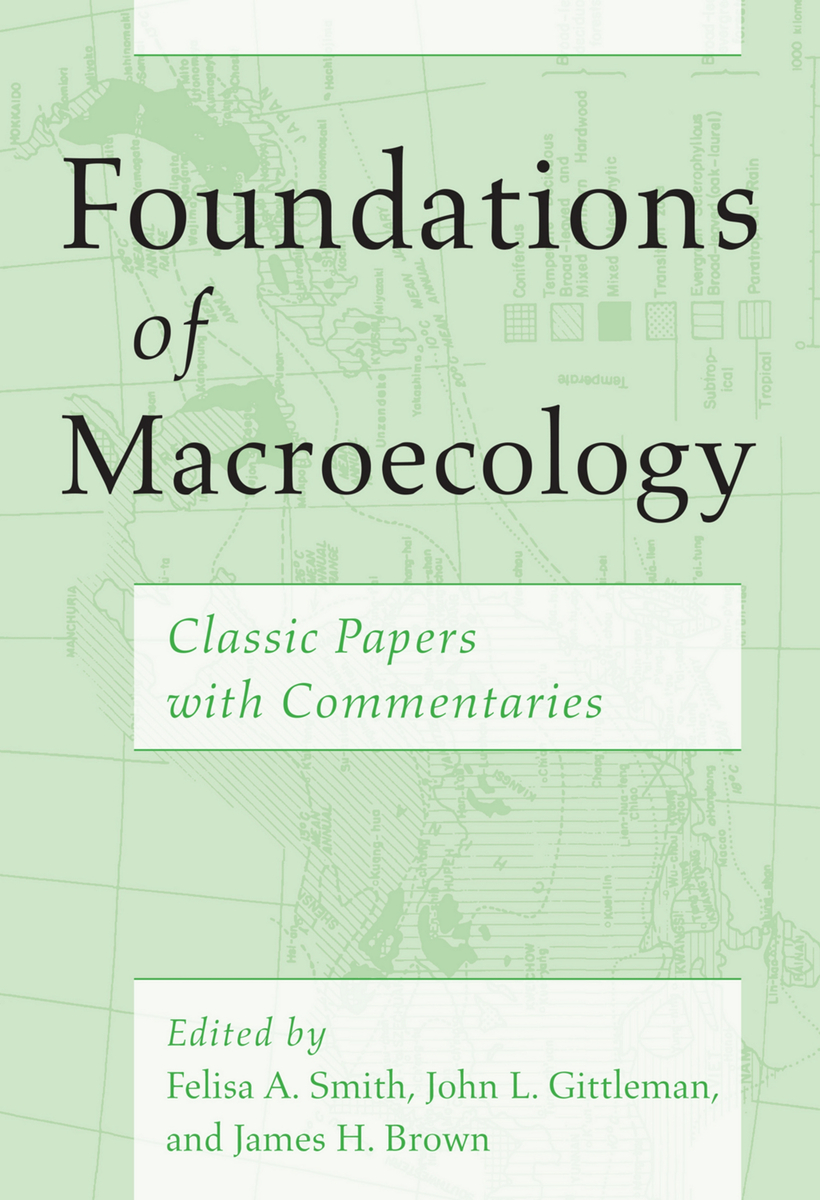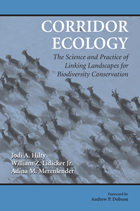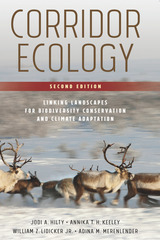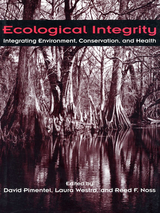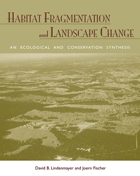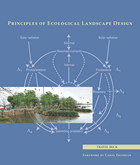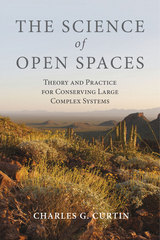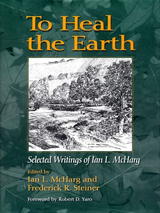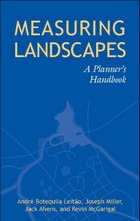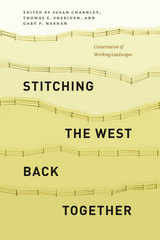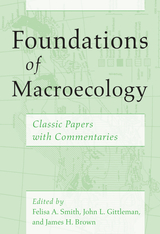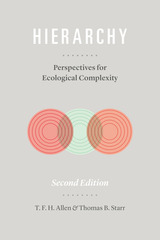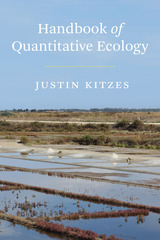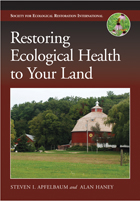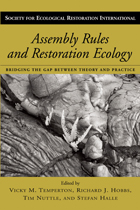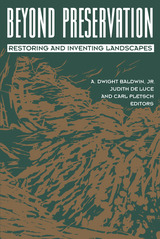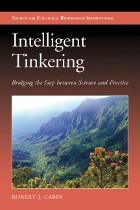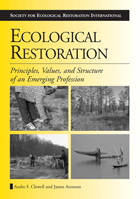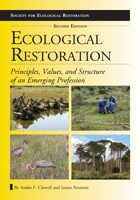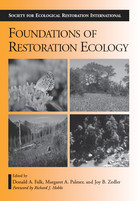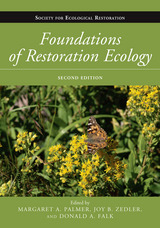Foundations of Macroecology: Classic Papers with Commentaries
edited by Felisa A. Smith, John L. Gittleman and James H. Brown
University of Chicago Press, 2014
eISBN: 978-0-226-11550-4 | Paper: 978-0-226-11547-4 | Cloth: 978-0-226-11533-7
Library of Congress Classification QH541.15.M23F68 2014
Dewey Decimal Classification 577
eISBN: 978-0-226-11550-4 | Paper: 978-0-226-11547-4 | Cloth: 978-0-226-11533-7
Library of Congress Classification QH541.15.M23F68 2014
Dewey Decimal Classification 577
ABOUT THIS BOOK | AUTHOR BIOGRAPHY | REVIEWS | TOC | REQUEST ACCESSIBLE FILE
ABOUT THIS BOOK
Macroecology is an approach to science that emphasizes the description and explanation of patterns and processes at large spatial and temporal scales. Some scientists liken it to seeing the forest through the trees, giving the proverbial phrase an ecological twist. The term itself was first introduced to the modern literature by James H. Brown and Brian A. Maurer in a 1989 paper, and it is Brown’s classic 1995 study, Macroecology, that is credited with inspiring the broad-scale subfield of ecology. But as with all subfields, many modern-day elements of macroecology are implicit in earlier works dating back decades, even centuries.
Foundations of Macroecology charts the evolutionary trajectory of these concepts—from the species-area relationship and the latitudinal gradient of species richness to the relationship between body size and metabolic rate—through forty-six landmark papers originally published between 1920 and 1998. Divided into two parts—“Macroecology before Macroecology” and “Dimensions of Macroecology”—the collection also takes the long view, with each paper accompanied by an original commentary from a contemporary expert in the field that places it in a broader context and explains its foundational role. Providing a solid, coherent assessment of the history, current state, and potential future of the field, Foundations of Macroecology will be an essential text for students and teachers of ecology alike.
Foundations of Macroecology charts the evolutionary trajectory of these concepts—from the species-area relationship and the latitudinal gradient of species richness to the relationship between body size and metabolic rate—through forty-six landmark papers originally published between 1920 and 1998. Divided into two parts—“Macroecology before Macroecology” and “Dimensions of Macroecology”—the collection also takes the long view, with each paper accompanied by an original commentary from a contemporary expert in the field that places it in a broader context and explains its foundational role. Providing a solid, coherent assessment of the history, current state, and potential future of the field, Foundations of Macroecology will be an essential text for students and teachers of ecology alike.
AUTHOR BIOGRAPHY
Felisa A. Smith is professor of biology at the University of New Mexico and coeditor of Animal Body Size, also published by the University of Chicago Press. John L. Gittleman is dean of the Odum School of Ecology at the University of Georgia. He is coeditor of Carnivore Conservation and Phylogeny and Conservation. James H. Brown is Distinguished Professor of Biology at the University of New Mexico and past president of the International Biogeography Society. He is author of Macroecology and coeditor of Foundations of Ecology and Foundations of Biogeography, all also published by the University of Chicago Press.
REVIEWS
“I love these papers. They’re our disciplinary heritage, and it’s valuable to wrap them all up in one spot. The pieces that have been selected are truly important, and there’s a roster of terrific scientists who have written informatively, sometimes even passionately, about the inspiration these papers provide. What’s not to like? A formidable summary that could and should be a useful basis for students new to the field.”
— Jeremy T. Kerr, University of Ottawa“Like the other ‘Foundations of’ books, this title includes classic papers and commentary by the editors on the development of the topics. Dates of the papers range from 1920 to 1998; topics include determinants of diversity and species abundances, allometry, speciation and extinction patterns, and new methodologies.”
— Ecology“Macroecology emphasizes the study of patterns and processes of species distributions, interactions, and diversity at broad temporal and spatial scales. This collection of classic papers is especially relevant for researchers studying biodiversity in a world impacted by human population growth on the one hand and climate change on the other. . . .The volume is also particularly timely in illustrating the roots of macroecology, which seems to be more a perspective on species and ecology than a discipline. . . . The papers in this useful but somewhat specialized book are mainly from the 1970s and 1980s, a golden age that allowed ecologists to recognize macroecology as a perspective distinct from many ecological endeavors of the period. . . . Recommended.”
— J. Burger, Rutgers, The State University of New Jersey, New Brunswick, Choice“Foundations of Macroecology is an essential compilation for researchers and teachers as well as students.”
— Conservation BiologyTABLE OF CONTENTS
Preface
Introduction: The Macro of Macroecology
Felisa A. Smith, John L. Gittleman, and James H. Brown
1
J. H. Brown and B. A. Maurer (1989)
Macroecology: The Division of Food and Space among Species on Continents
Science 243:1145–50
Commentary by James H. Brown and Brian A. Maurer
PART ONE
Macroecology before Macroecology
Edited by James H. Brown, S. K. Morgan Ernest, and Ethan P. White
2
O. Arrhenius (1920)
Distribution of the Species over the Area
Meddelanden Från K. Vetenskapsakademiens Nobelinstitut 4:1–6
Commentary by Ethan P. White
3
R. A. Fisher, A. S. Corbet, and C. B. Williams (1943)
The Relation between the Number of Species and the Number of Individuals in a Random Sample of an Animal Population
Journal of Animal Ecology 12:42–58
Commentary by Ethan P. White
4
C. B. Williams (1947)
The Generic Relations of Species in Small Ecological Communities
Journal of Animal Ecology 16:11–18
Commentary by Nicholas J. Gotelli
5
G. E. Hutchinson and R. H. MacArthur (1959)
A Theoretical Ecological Model of Size Distributions among Species of Animals
American Naturalist 93:117–25
Commentary by S. K. Morgan Ernest
6
L. R. Taylor (1961)
Aggregation, Variance and the Mean
Nature 189:732–35
Commentary by Ford Ballantyne IV
7
B. K. McNab (1963)
Bioenergetics and the Determination of Home Range Size
American Naturalist 97:133–40
Commentary by James H. Brown and John L. Gittleman
8
E. C. Olson (1966)
Community Evolution and the Origin of Mammals
Ecology 47:291–302
Commentary by Mark D. Uhen and Jessica Theodor
9
R. W. Sheldon and T. R. Parsons (1967)
A Continuous Size Spectrum for Particulate Matter in the Sea
Journal of the Fisheries Research Board of Canada 24:909–15
Commentary by S. K. Morgan Ernest
10
M. L. Rosenzweig (1968)
Net Primary Productivity of Terrestrial Communities: Prediction from Climatological Data
American Naturalist 102:67–74
Commentary by S. K. Morgan Ernest
11
H. L. Sanders (1968)
Marine Benthic Diversity: A Comparative Study
American Naturalist 102:243–82
Commentary by Andrew Clarke
PART TWO
Dimensions of Macroecology
Allometry and Body Size
Edited by Alistair Evans, Daniel P. Costa, Karl J. Niklas, Richard M. Sibly, and Felisa A. Smith
12
T. A. McMahon (1973)
Size and Shape in Biology
Science 179:1201–4
Commentary by Richard M. Sibly and Karl J. Niklas
13
T. Fenchel (1974)
Intrinsic Rate of Natural Increase: The Relationship with Body Size
Oecologia 14:317–26
Commentary by Richard M. Sibly
14
J. Damuth (1981)
Population Density and Body Size in Mammals
Nature 290:699–700
Commentary by Alistair Evans
15
S. L. Lindstedt and W. A. Calder III (1981)
Body Size, Physiological Time, and Longevity of Homeothermic Animals
Quarterly Review of Biology 56:1–16
Commentary by Daniel P. Costa
16
D. R. Morse, N. E. Stork, and J. H. Lawton (1988)
Species Number, Species Abundance and Body Length Relationships of Arboreal Beetles in Bornean Lowland Rain Forest Trees
Ecological Entomology 13:25–37
Commentary by Alistair Evans
17
R. A. Norberg (1988)
Theory of Growth Geometry of Plants and Self-Thinning of Plant Populations: Geometric Similarity, Elastic Similarity, and Different Growth Modes of Plant Parts
American Naturalist 131:220–56
Commentary by Karl J. Niklas
18
J. H. Brown and P. F. Nicoletto (1991)
Spatial Scaling of Species Composition: Body Masses of North American Land Mammals
American Naturalist 138:1478–1512
Commentary by Felisa A. Smith
Evolutionary Dynamics
Edited by Mark D. Uhen
19
L. Van Valen (1973)
A New Evolutionary Law
Evolutionary Theory 1:1–30
Commentary by Matthew A. Kosnik
20
R. K. Bambach (1983)
Ecospace Utilization and Guilds in Marine Communities through the Phanerozoic
In Topics in Geobiology, edited by M. J. S. Tevesz and P. L. McCall, pp. 719–46. Plenum Press, New York.
Commentary by Andrew M. Bush
21
R. W. Graham (1986)
Response of Mammalian Communities to Environmental Changes during the Late Quaternary
In Community Ecology, edited by J. Diamond and T. J. Case, pp. 300–314. Harper and Rowe, New York.
Commentary by S. Kathleen Lyons
22
D. Jablonski (1986)
Background and Mass Extinctions: The Alternation of Macroevolutionary Regimes
Science 231:129–33
Commentary by Michael Foote
23
J. H. Brown and B. A. Maurer (1987)
Evolution of Species Assemblages: Effects of Energetic Constraints and Species Dynamics on the Diversification of the North American Avifauna
American Naturalist 130:1-17
Commentary by Douglas A. Kelt
24
K. J. Gaston (1998)
Species-Range Size Distributions: Products of Speciation, Extinction and Transformation
Philosophical Transactions of the Royal Society of London B 353:219–30
Commentary by David Storch
Abundance and Distributions
Edited by Kevin J. Gaston, Christy M. McCain, and S. Kathleen Lyons
25
S. J. McNaughton and L. L. Wolf (1970)
Dominance and the Niche in Ecological Systems
Science 167:131–39
Commentary by Brian J. McGill
26
S. Anderson (1977)
Geographic Ranges of North American Terrestrial Mammals
American Museum Novitates 2629:1–15
Commentary by Christy M. McCain
27
J. C. Bernabo and T. Webb III (1977)
Changing Patterns in the Holocene Pollen Record of Northeastern North America: A Mapped Summary
Quaternary Research 8:64–96
Commentary by John W. (Jack) Williams
28
E. C. Pielou (1977)
The Latitudinal Spans of Seaweed Species and Their Patterns of Overlap
Journal of Biogeography 4:299–311
Commentary by Christy M. McCain
29
D. Rabinowitz (1981)
Seven Forms of Rarity
In The Biological Aspects of Rare Plant Conservation, edited by H. Synge, pp. 205–17. John Wiley and Sons, New York.
Commentary by Kevin J. Gaston
30
I. Hanski (1982)
Dynamics of Regional Distribution: The Core and Satellite Species Hypothesis
Oikos 38:210–21
Commentary by S. Kathleen Lyons
31
J. H. Brown (1984)
On the Relationship between Abundance and Distribution of Species
American Naturalist 124:255–79
Commentary by Christy M. McCain
Species Diversity
Edited by Jessica Theodor, Alison G. Boyer, and David J. Currie
32
R. M. May (1978)
The Dynamics and Diversity of Insect Faunas
In Diversity of Insect Faunas, edited by L. A. Mound and N. Waloff, pp. 188–204. Royal Entomological Society of London Symposium 9. Blackwell Scientific, Oxford.
Commentary by Allen H. Hurlbert
33
J. W. Valentine (1980)
Determinants of Diversity in Higher Taxonomic Categories
Paleobiology 6:444–50
Commentary by David Jablonski
34
J. H. Brown (1981)
Two Decades of Homage to Santa Rosalia: Toward a General Theory of Diversity
American Zoologist 21:877–88
Commentary by Walter Jetz
35
D. M. Raup and J. J. Sepkoski Jr. (1982)
Mass Extinctions in the Marine Fossil Record
Science 215:1501–3
Commentary by Jessica Theodor
36
K. J. Niklas, B. H. Tiffney, and A. H. Knoll (1983)
Patterns in Vascular Land Plant Diversification
Nature 303:614–16
Commentary by Peter Wilf
37
D. H. Wright (1983)
Species-Energy Theory: An Extension of Species-Area Theory
Oikos 41:496–506
Commentary by David J. Currie
38
K. P. Dial and J. M. Marzluff (1988)
Are the Smallest Organisms the Most Diverse?
Ecology 69:1620–24
Commentary by Alison G. Boyer
39
J. J. Sepkoski Jr. (1988)
Alpha, Beta, or Gamma: Where Does All the Diversity Go?
Paleobiology 14:221–34
Commentary by Peter Wagner
40
G. C. Stevens (1989)
The Latitudinal Gradient in Geographical Range: How So Many Species Coexist in the Tropics
American Naturalist 133:240–56
Commentary by David J. Currie
Methodological Advances
Edited by John L. Gittleman
41
J. A. Wolfe (1971)
Tertiary Climatic Fluctuations and Methods of Analysis of Tertiary Floras
Palaeogeography, Palaeoclimatology, Palaeoecology 9:27–57
Commentary by Scott L. Wing
42
D. M. Raup (1975)
Taxonomic Diversity Estimation Using Rarefaction
Paleobiology 1:333–42
Commentary by Andrew M. Bush
43
E. F. Conner and E. D. McCoy (1979)
The Statistics and Biology of the Species-Area Relationship
American Naturalist 113:791–833
Commentary by Brian A. Maurer
44
P. H. Harvey and G. M. Mace (1982)
Comparisons between Taxa and Adaptive Trends: Problems of Methodology
In Current Problems in Sociobiology, edited by King’s College Sociobiology Group, pp. 343–61. Cambridge University Press, Cambridge.
Commentary by Tim M. Blackburn
45
R. K. Colwell and D. W. Winkler (1984)
A Null Model for Null Models in Biogeography
In Ecological Communities: Conceptual Issues and the Evidence, edited by D. R. Strong Jr., D. Simberloff, L. G. Abele, and A. B. Thistle, pp. 344–59. Princeton University Press, Princeton, NJ.
Commentary by Nicholas J. Gotelli
46
J. Felsenstein (1985)
Phylogenies and the Comparative Method
American Naturalist 125:1–15
Commentary by T. Jonathan Davies
List of Contributors
Index
Introduction: The Macro of Macroecology
Felisa A. Smith, John L. Gittleman, and James H. Brown
1
J. H. Brown and B. A. Maurer (1989)
Macroecology: The Division of Food and Space among Species on Continents
Science 243:1145–50
Commentary by James H. Brown and Brian A. Maurer
PART ONE
Macroecology before Macroecology
Edited by James H. Brown, S. K. Morgan Ernest, and Ethan P. White
2
O. Arrhenius (1920)
Distribution of the Species over the Area
Meddelanden Från K. Vetenskapsakademiens Nobelinstitut 4:1–6
Commentary by Ethan P. White
3
R. A. Fisher, A. S. Corbet, and C. B. Williams (1943)
The Relation between the Number of Species and the Number of Individuals in a Random Sample of an Animal Population
Journal of Animal Ecology 12:42–58
Commentary by Ethan P. White
4
C. B. Williams (1947)
The Generic Relations of Species in Small Ecological Communities
Journal of Animal Ecology 16:11–18
Commentary by Nicholas J. Gotelli
5
G. E. Hutchinson and R. H. MacArthur (1959)
A Theoretical Ecological Model of Size Distributions among Species of Animals
American Naturalist 93:117–25
Commentary by S. K. Morgan Ernest
6
L. R. Taylor (1961)
Aggregation, Variance and the Mean
Nature 189:732–35
Commentary by Ford Ballantyne IV
7
B. K. McNab (1963)
Bioenergetics and the Determination of Home Range Size
American Naturalist 97:133–40
Commentary by James H. Brown and John L. Gittleman
8
E. C. Olson (1966)
Community Evolution and the Origin of Mammals
Ecology 47:291–302
Commentary by Mark D. Uhen and Jessica Theodor
9
R. W. Sheldon and T. R. Parsons (1967)
A Continuous Size Spectrum for Particulate Matter in the Sea
Journal of the Fisheries Research Board of Canada 24:909–15
Commentary by S. K. Morgan Ernest
10
M. L. Rosenzweig (1968)
Net Primary Productivity of Terrestrial Communities: Prediction from Climatological Data
American Naturalist 102:67–74
Commentary by S. K. Morgan Ernest
11
H. L. Sanders (1968)
Marine Benthic Diversity: A Comparative Study
American Naturalist 102:243–82
Commentary by Andrew Clarke
PART TWO
Dimensions of Macroecology
Allometry and Body Size
Edited by Alistair Evans, Daniel P. Costa, Karl J. Niklas, Richard M. Sibly, and Felisa A. Smith
12
T. A. McMahon (1973)
Size and Shape in Biology
Science 179:1201–4
Commentary by Richard M. Sibly and Karl J. Niklas
13
T. Fenchel (1974)
Intrinsic Rate of Natural Increase: The Relationship with Body Size
Oecologia 14:317–26
Commentary by Richard M. Sibly
14
J. Damuth (1981)
Population Density and Body Size in Mammals
Nature 290:699–700
Commentary by Alistair Evans
15
S. L. Lindstedt and W. A. Calder III (1981)
Body Size, Physiological Time, and Longevity of Homeothermic Animals
Quarterly Review of Biology 56:1–16
Commentary by Daniel P. Costa
16
D. R. Morse, N. E. Stork, and J. H. Lawton (1988)
Species Number, Species Abundance and Body Length Relationships of Arboreal Beetles in Bornean Lowland Rain Forest Trees
Ecological Entomology 13:25–37
Commentary by Alistair Evans
17
R. A. Norberg (1988)
Theory of Growth Geometry of Plants and Self-Thinning of Plant Populations: Geometric Similarity, Elastic Similarity, and Different Growth Modes of Plant Parts
American Naturalist 131:220–56
Commentary by Karl J. Niklas
18
J. H. Brown and P. F. Nicoletto (1991)
Spatial Scaling of Species Composition: Body Masses of North American Land Mammals
American Naturalist 138:1478–1512
Commentary by Felisa A. Smith
Evolutionary Dynamics
Edited by Mark D. Uhen
19
L. Van Valen (1973)
A New Evolutionary Law
Evolutionary Theory 1:1–30
Commentary by Matthew A. Kosnik
20
R. K. Bambach (1983)
Ecospace Utilization and Guilds in Marine Communities through the Phanerozoic
In Topics in Geobiology, edited by M. J. S. Tevesz and P. L. McCall, pp. 719–46. Plenum Press, New York.
Commentary by Andrew M. Bush
21
R. W. Graham (1986)
Response of Mammalian Communities to Environmental Changes during the Late Quaternary
In Community Ecology, edited by J. Diamond and T. J. Case, pp. 300–314. Harper and Rowe, New York.
Commentary by S. Kathleen Lyons
22
D. Jablonski (1986)
Background and Mass Extinctions: The Alternation of Macroevolutionary Regimes
Science 231:129–33
Commentary by Michael Foote
23
J. H. Brown and B. A. Maurer (1987)
Evolution of Species Assemblages: Effects of Energetic Constraints and Species Dynamics on the Diversification of the North American Avifauna
American Naturalist 130:1-17
Commentary by Douglas A. Kelt
24
K. J. Gaston (1998)
Species-Range Size Distributions: Products of Speciation, Extinction and Transformation
Philosophical Transactions of the Royal Society of London B 353:219–30
Commentary by David Storch
Abundance and Distributions
Edited by Kevin J. Gaston, Christy M. McCain, and S. Kathleen Lyons
25
S. J. McNaughton and L. L. Wolf (1970)
Dominance and the Niche in Ecological Systems
Science 167:131–39
Commentary by Brian J. McGill
26
S. Anderson (1977)
Geographic Ranges of North American Terrestrial Mammals
American Museum Novitates 2629:1–15
Commentary by Christy M. McCain
27
J. C. Bernabo and T. Webb III (1977)
Changing Patterns in the Holocene Pollen Record of Northeastern North America: A Mapped Summary
Quaternary Research 8:64–96
Commentary by John W. (Jack) Williams
28
E. C. Pielou (1977)
The Latitudinal Spans of Seaweed Species and Their Patterns of Overlap
Journal of Biogeography 4:299–311
Commentary by Christy M. McCain
29
D. Rabinowitz (1981)
Seven Forms of Rarity
In The Biological Aspects of Rare Plant Conservation, edited by H. Synge, pp. 205–17. John Wiley and Sons, New York.
Commentary by Kevin J. Gaston
30
I. Hanski (1982)
Dynamics of Regional Distribution: The Core and Satellite Species Hypothesis
Oikos 38:210–21
Commentary by S. Kathleen Lyons
31
J. H. Brown (1984)
On the Relationship between Abundance and Distribution of Species
American Naturalist 124:255–79
Commentary by Christy M. McCain
Species Diversity
Edited by Jessica Theodor, Alison G. Boyer, and David J. Currie
32
R. M. May (1978)
The Dynamics and Diversity of Insect Faunas
In Diversity of Insect Faunas, edited by L. A. Mound and N. Waloff, pp. 188–204. Royal Entomological Society of London Symposium 9. Blackwell Scientific, Oxford.
Commentary by Allen H. Hurlbert
33
J. W. Valentine (1980)
Determinants of Diversity in Higher Taxonomic Categories
Paleobiology 6:444–50
Commentary by David Jablonski
34
J. H. Brown (1981)
Two Decades of Homage to Santa Rosalia: Toward a General Theory of Diversity
American Zoologist 21:877–88
Commentary by Walter Jetz
35
D. M. Raup and J. J. Sepkoski Jr. (1982)
Mass Extinctions in the Marine Fossil Record
Science 215:1501–3
Commentary by Jessica Theodor
36
K. J. Niklas, B. H. Tiffney, and A. H. Knoll (1983)
Patterns in Vascular Land Plant Diversification
Nature 303:614–16
Commentary by Peter Wilf
37
D. H. Wright (1983)
Species-Energy Theory: An Extension of Species-Area Theory
Oikos 41:496–506
Commentary by David J. Currie
38
K. P. Dial and J. M. Marzluff (1988)
Are the Smallest Organisms the Most Diverse?
Ecology 69:1620–24
Commentary by Alison G. Boyer
39
J. J. Sepkoski Jr. (1988)
Alpha, Beta, or Gamma: Where Does All the Diversity Go?
Paleobiology 14:221–34
Commentary by Peter Wagner
40
G. C. Stevens (1989)
The Latitudinal Gradient in Geographical Range: How So Many Species Coexist in the Tropics
American Naturalist 133:240–56
Commentary by David J. Currie
Methodological Advances
Edited by John L. Gittleman
41
J. A. Wolfe (1971)
Tertiary Climatic Fluctuations and Methods of Analysis of Tertiary Floras
Palaeogeography, Palaeoclimatology, Palaeoecology 9:27–57
Commentary by Scott L. Wing
42
D. M. Raup (1975)
Taxonomic Diversity Estimation Using Rarefaction
Paleobiology 1:333–42
Commentary by Andrew M. Bush
43
E. F. Conner and E. D. McCoy (1979)
The Statistics and Biology of the Species-Area Relationship
American Naturalist 113:791–833
Commentary by Brian A. Maurer
44
P. H. Harvey and G. M. Mace (1982)
Comparisons between Taxa and Adaptive Trends: Problems of Methodology
In Current Problems in Sociobiology, edited by King’s College Sociobiology Group, pp. 343–61. Cambridge University Press, Cambridge.
Commentary by Tim M. Blackburn
45
R. K. Colwell and D. W. Winkler (1984)
A Null Model for Null Models in Biogeography
In Ecological Communities: Conceptual Issues and the Evidence, edited by D. R. Strong Jr., D. Simberloff, L. G. Abele, and A. B. Thistle, pp. 344–59. Princeton University Press, Princeton, NJ.
Commentary by Nicholas J. Gotelli
46
J. Felsenstein (1985)
Phylogenies and the Comparative Method
American Naturalist 125:1–15
Commentary by T. Jonathan Davies
List of Contributors
Index
REQUEST ACCESSIBLE FILE
If you are a student who cannot use this book in printed form, BiblioVault may be able to supply you with an electronic file for alternative access.
Please have the accessibility coordinator at your school fill out this form.
It can take 2-3 weeks for requests to be filled.
See other books on: Biological Diversity | Classic Papers | Commentaries | Foundations | Microbiology
See other titles from University of Chicago Press
